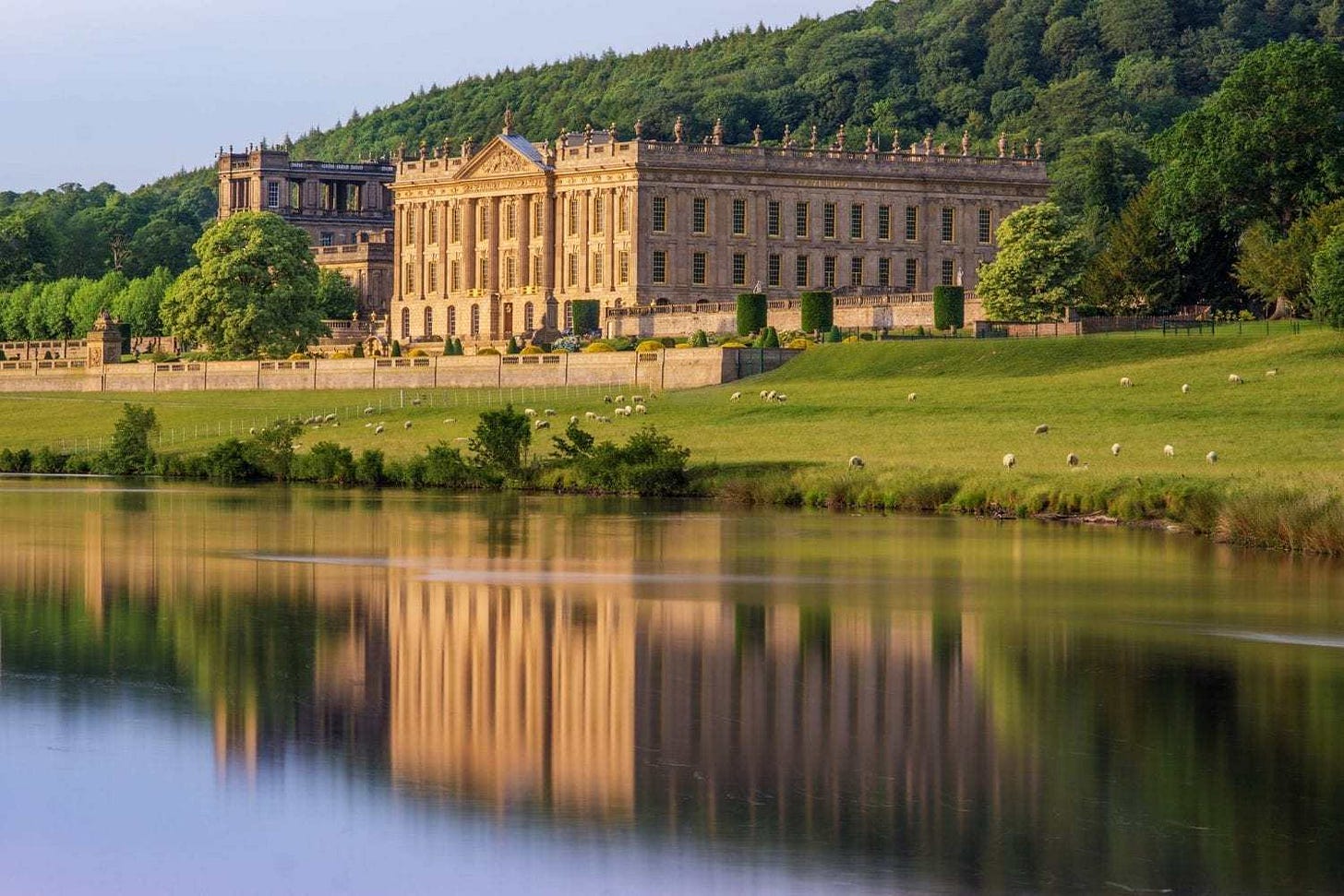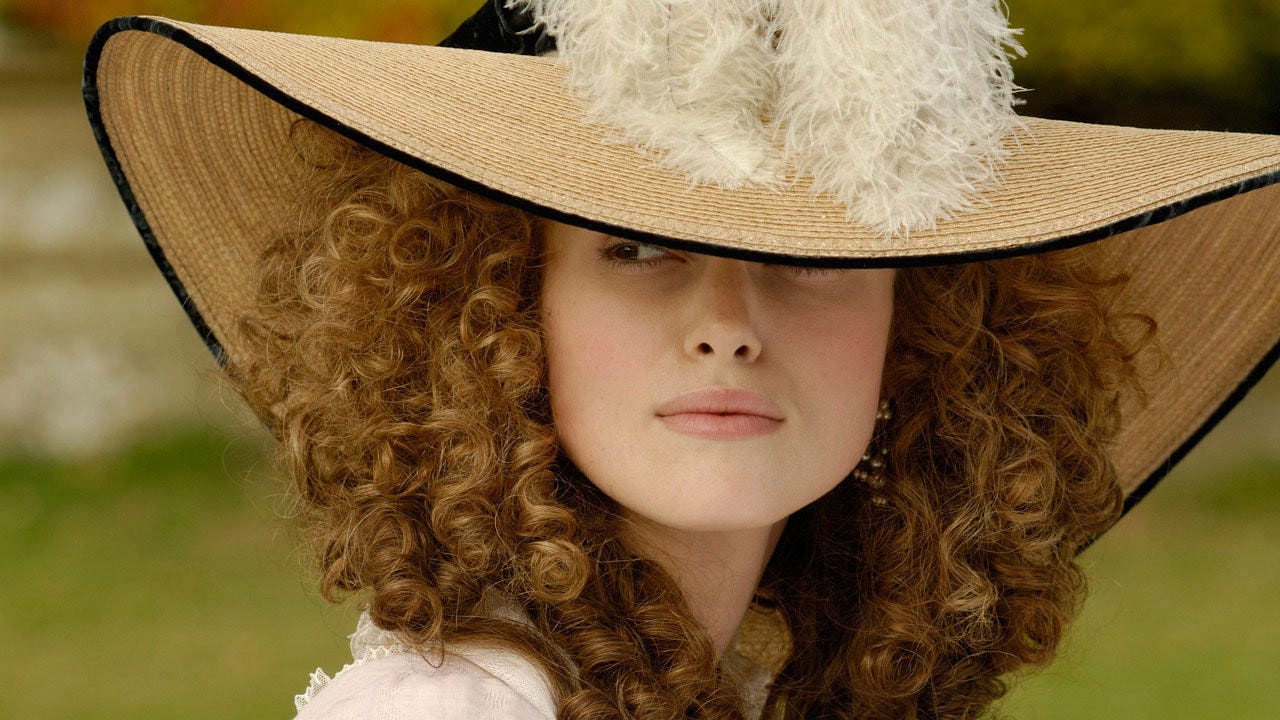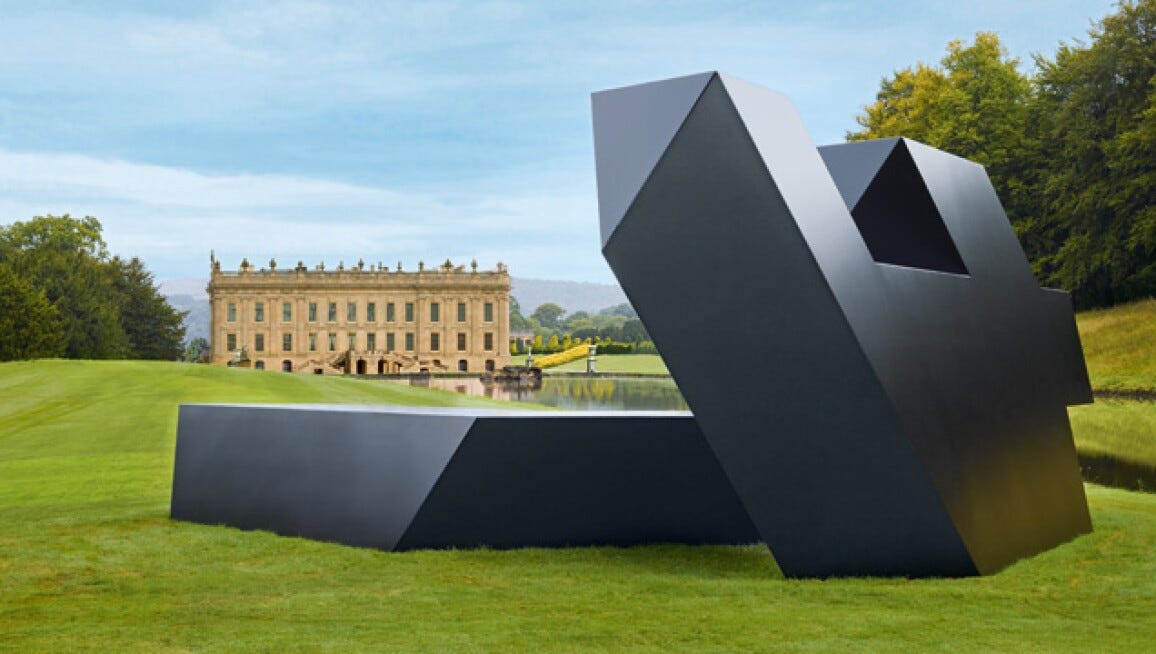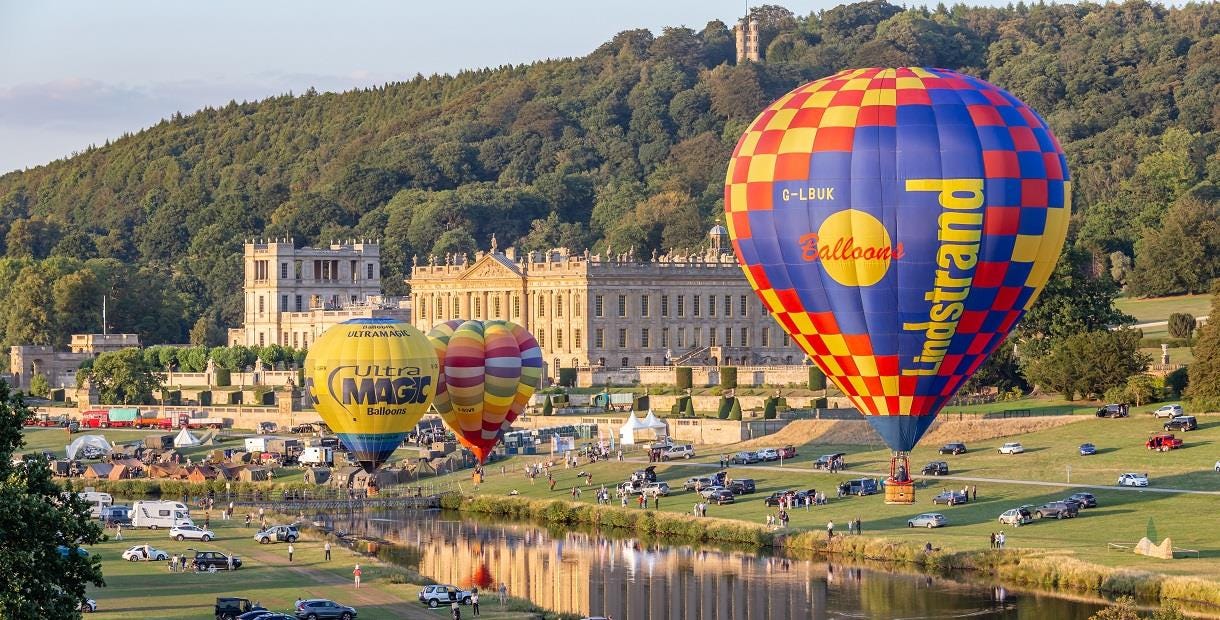A Pilgrimage to Pemberley
Chatsworth House - whether it is more significant as a historical or fictional landmark is not open for debate, at least not in this newsletter. Of course, Chatsworth has been the Cavendish family seat since 1549, hosting celebrities like the Czar of Russia, Mark Twain, and Queen Victoria. But in my heart, it will always be Pemberley, home to the Mr. Fitzwilliam Darcey. As a young millennial, the 2005 adaptation of Pride and Prejudice will always have my heart. After all, it was my first taste of Jane Austen and perhaps my gateway drug into romance novels. It sparked my love of the Georgian period, which naturally expanded to historical romance. And here we are. Considering its significant impact on my life, I decided it was only appropriate as a devoted Austen Acolyte to make my pilgrimage to Pemberley finally.
They gradually ascended for half a mile, and then found themselves at the top of a considerable eminence, where the wood ceased, and the eye was instantly caught by Pemberley House, situated on the opposite side of a valley, into which the road with some abruptness wound. It was a large, handsome, stone building, standing well on rising ground, and backed by a ridge of high woody hills; —and in front, a stream of some natural importance was swelled into greater, but without any artificial appearance. Its banks were neither formal, nor falsely adorned. Elizabeth was delighted. She had never seen a place for which nature had done more, or where natural beauty had been so little counteracted by an awkward taste. They were all of them warm in their admiration; and at that moment she felt, that to be mistress of Pemberley might be something!
Jane Austen, Pride & Prejudice
A Quick History of the Cavendish Family & Chatsworth House
Chatsworth House, with its grand history, mirrors the rise and fall of British aristocracy. Seated in the hills of the Peak District, the House, as we know it today, was constructed in the late 17th century by William Cavendish, 4th Earl of Devonshire. His son, the 5th Duke of Devonshire, married Georgiana Spencer, an aristocrat, socialite, political organizer, author, and activist. Their unconventional relationship included a third, Lady Elizabeth Foster, Georgiana’s best friend. Georgiana’s life in a ménage à trois was famously portrayed by none other than Keira Knightley in The Duchess. (Chatsworth made a few appearances). Her son, the 6th Duke, significantly expanded the house and gardens, creating many iconic features still standing. He championed a young apprentice named Joseph Paxton, who went on to design Crystal Palace in London.
Like many great houses, Chatsworth faced numerous difficulties in the 20th century. Social change and taxes began to affect the Devonshires' lifestyle. At the onset of the Second World War, Chatsworth House was repurposed for institutional use under the authority of the Cavendish family as part of the broader war effort. Country estates like Chatsworth were often converted into barracks and hospitals, leveraging their expansive space. However, the 10th Duke feared housing soldiers could damage the interiors, so he shrewdly, if perhaps not so patriotically, opted to open the house to school girls instead.
Tragically, the unexpected deaths of the 10th Duke and his heir within seven years led to a staggering inheritance tax bill, equivalent to £305 million today. Despite explicit encouragement from the government to donate Chatsworth to the National Trust, the 11th Duke chose to keep the family seat, though it meant relinquishing nearly all other assets. To ensure the survival of Chatsworth, the Cavendish family had to transform it into a self-sustaining commercial enterprise, going against all their aristocratic sensibilities. So, did they succeed?
Chatsworth House Today
After my trip to Chatsworth, several reflections point to a common theme: the Cavendish family has adeptly made Chatsworth House feel both contemporary and relevant in 2024, rather than preserving it as a static time capsule like many other stately homes.
When I disembarked from the coach, I was struck by the grandeur of Chatsworth House and the scale of its operation. The estate featured numerous cafes, gelato carts, coffee bars, and luxury home goods shops, all crafted in a refined British countryside aesthetic reminiscent of the Cotswolds. The area buzzed with families enjoying picnic lunches and bike rides, rivaling the active atmosphere of Hyde Park.
Upon entering the House, I was surprised to see equal parts historical preservation as new additions. Chatsworth House is alive with ongoing exhibitions, including a current collaboration with the fashion house Erdem. The eponymous founder, Erdem Moralıoğlu, was inspired by the late Duchess Deborah Cavendish née Mitford, yes, of those Mitford sisters, who served as a muse for one of his collections. The decor in one state bedroom had been removed to showcase the designs of a contemporary furniture designer. Rather than the heavy four-poster bed, a pale wood bed stood in the middle of the room with delicate tendrils reaching up to the ceiling.
Touring the gardens, I discovered that a partnership with the House of Gucci led to the refurbishment of several stately gardens in exchange for the use of the location. Sotheby’s also utilizes the expansive grounds for an outdoor auction of large-scale sculptures, priced in the six figures. The Cavendish family’s flair for luxury brand partnerships became even more evident when I learned that Belmond, the owner of the Orient Express, operates a train service connecting Victoria Station to Chatsworth House.
Some might view these partnerships as a sign of Chatsworth House being a capitalist sellout. To that, I would say it is the home of a duke - hardly a symbol of equity. But more seriously, they also bring valuable cultural exhibits to the East Midlands that might otherwise not be seen in the region. These partnerships attract large numbers of tourists and generate economic opportunities for the local community. It’s important to note that, due to the non-profit structure, the Cavendish family does not benefit financially from these revenues. Instead, all funds are reinvested into the estate, and the family must pay market-rate rent to maintain their residence. (I would love to know what they use as comps). With an estimated annual upkeep cost of £4 million, these revenue streams are crucial for keeping Chatsworth House open to the public and providing cultural entertainment and education for locals and tourists alike.
The community appears to be central to Chatsworth’s mission. While the grounds are immaculately maintained, they are far from being treated as too precious to use—in fact, the opposite is true. I watched as grandparents cheered on their grandchildren competing in a somersault race next to a Grade I Listed heritage site. Children raced around on bicycles, and dogs roughhoused together. The estate serves as a stunning park, hosting events like the County Fair and Christmas Market. This commitment to the community was further highlighted the next day when I completed their post-visit survey. One of the first questions asked whether Chatsworth felt like “a place for people like me.” A far cry from polluting the shades of Chatsworth. So, while the estate cultivates a luxury persona through its partnerships, it remains deeply connected to and supportive of the surrounding community, embracing a strong sense of provincial pride. While I know Chatsworth House is not the second Camelot, I wonder whether it can serve as a model for maintaining cultural heritage without stagnating. It might not meet Lady Catherine de Bourgh’s approval, but Chatsworth has maintained consequence and purpose in a time when many of its peers languish in the past.
Thank you for reading A Pilgrimage to Pemberley. If you want more Chatsworth content, check out the Chatsworth House Travel Guide!









